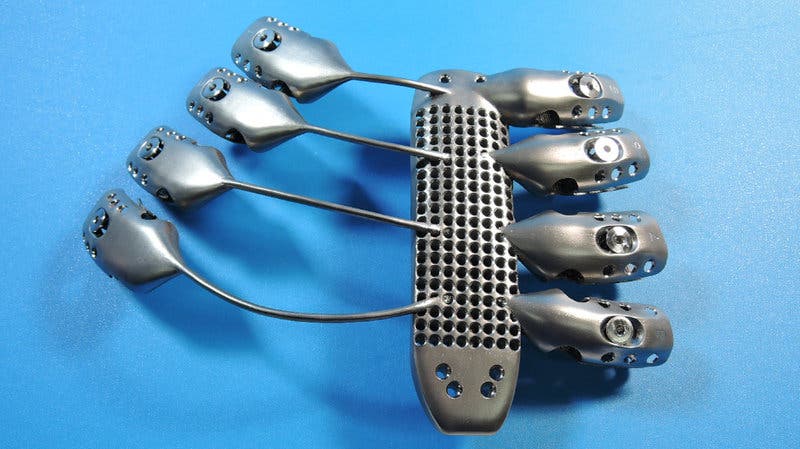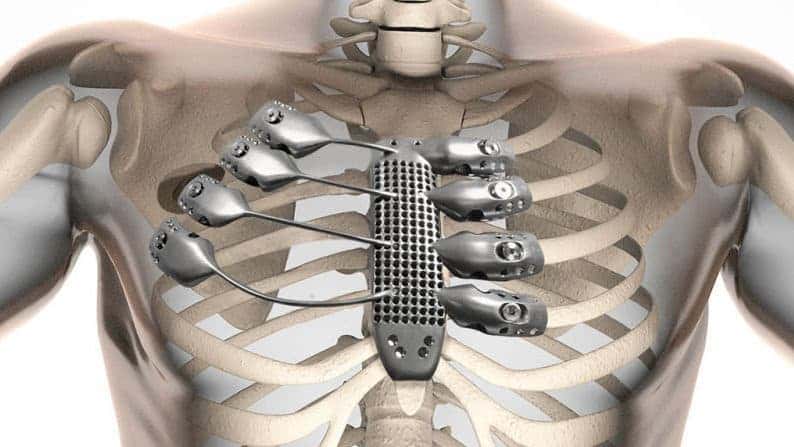Reconstructive surgery just got an upgrade after a patient who had lost four ribs and part of his sternum had a 3-D printed titanium replica fitted instead. This was the first such procedure. Although the operation was a sound success with the replica matching like a glove, doctors say that this sort of intervention is only for really extreme cases. You can’t become Wolverine overnight, not exactly at least.
The implant was printed with a special metal printer from an Australian company called Anatomics, while the operation was done by surgeons at the Salamanca University Hospital, Spain. The printer fires an electron beam that melts a titanium powder layer by layer until the desired shape is reached. This you get a 100% custom design prosthesis, with a level of complexity unrivaled by traditional methods. Typically, you’d start with metal plates and bars, gradually twisting and welding until you get something that looks like a rib cage or sternum.
Despite it’s made from titanium, the implant is comfortable. The four ribs are thin and flexible, so breathing is easy.
Also read about the first 3-D printed skull implant or the 3-D printed mask for the patient who had lost his face to cancer.











